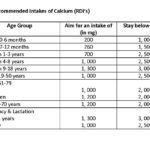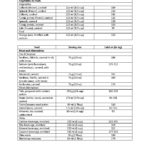Consuming enough calcium: building a strong framework

Dairy consumption seems to have decreased in the last little while. I find that in my private practice I always have clients who are avoiding it for one reason or another. Incidence of lactose intolerance seems to have increased and then there are those few people who have a true cow’s milk protein allergy so they need to avoid all forms of dairy. Add to this the amount of people who are choosing a vegetarian or vegan lifestyle and we have a huge population now that is avoiding dairy. While there are many new dairy free products on the shelves; almond milk, soy milk, rice milk, coconut milk, and yogurts and ice creams made out of the same products, there seems to be few people who avail of them. Enter the problem. People are removing a whole food group from their diet without replacing it with something and this particular food contains most of the calcium in our diets.
Now, I’m not saying that people need to consume dairy to be healthy or get the amount of calcium they need but I want to talk about why calcium is so important and the other ways we can get it into our diet.
Calcium
Calcium is the most abundant nutrient in our bodies and has many important roles including:
- Maintaining bone mass
- Vascular contraction
- Vasodilation
- Muscle functions
- Nerve transmission
- Intracellular signaling
- Hormonal secretion
So all in all, calcium is a super important nutrient. It becomes much more important when we realize that about ninety-eight percent of calcium is found in our bones while the rest is found in our blood. The calcium found in our blood, or serum, needs to be maintained with utmost precision because of the many roles above…so, when serum calcium is low…where does the extra calcium come from? Our bones! Calcium is sucked out of our bones so our serum calcium stays constant. So, you can see, if calcium intake is chronically low, our bones pay the price. This is why low calcium intake over time can lead to osteoporosis, progressive loss of bone mineral density, compromised bone strength and increased risk of fractures (for more information read these studies here or here).
Lactose Intolerance
Lactose is the natural sugar found in milk. When people have lactose intolerance, they are lacking enough of the enzyme lactase in their bodies to help them break down lactose. When lactose intolerance is present it comes along with its own horrible and uncomfortable set of symptoms when lactose is ingested.
Fortunately, for people who have lactose intolerance, there are a few over-the-counter enzymes they can take to help them digest lactose if taken before a meal. They can also find many lactose free products on the shelves including milk, yogurt, ice cream, cheese and butter. So their situation has become much easier to manage.
At risk populations
There are a few populations who are at risk for low intake of calcium and who will be impacted most by insufficient intake. Women, female adolescents and post-menopausal women are the most at risk. Due to hormone changes in women during menopause, extra calcium can get withdrawn from the bones. Adolescent girls are still growing and going through hormones changes themselves, so sufficient calcium intake in this population is extremely important, especially considering adolescence is when your bone structure is being formed for the future. Individuals with lactose intolerance or a cow’s milk protein allergy are the second at risk population. We have discussed lactose intolerance above, as long as this population is consuming the same amount of lactose free products they will receive their calcium intake. Lactose free products have the same amount of calcium present, they just have the lactose broken down in them already. Adolescents and elderly are also at risk because lactose tolerance decreases with age and adolescents are still forming their bone structure. Lastly, vegan and vegetarian individuals are at risk because these diets are associated with several factors that do not support bone health including, low body mass index (BMI), low intake of Calcium, Vitamin D, Vitamin B12 and protein.
So how can we get the amount of calcium we need and what are some non-dairy examples of calcium???
 Calcium requirements for each age group: see where you fall!
Calcium requirements for each age group: see where you fall!
Source: here
 Food sources of calcium: check it out!!
Food sources of calcium: check it out!!
Source: here
Check out how much calcium you need for your age and then food sources of calcium. If you don’t think you can get enough in your diet naturally through food, talk to your Doctor or Pharmacist about the best supplement for your needs.
Hope this blog was an eye-opener. Calcium is super important…it’s literally the framework that keeps your body strong throughout your life. Take care of it!
Signing off,
Adrianna Smallwood, RD
